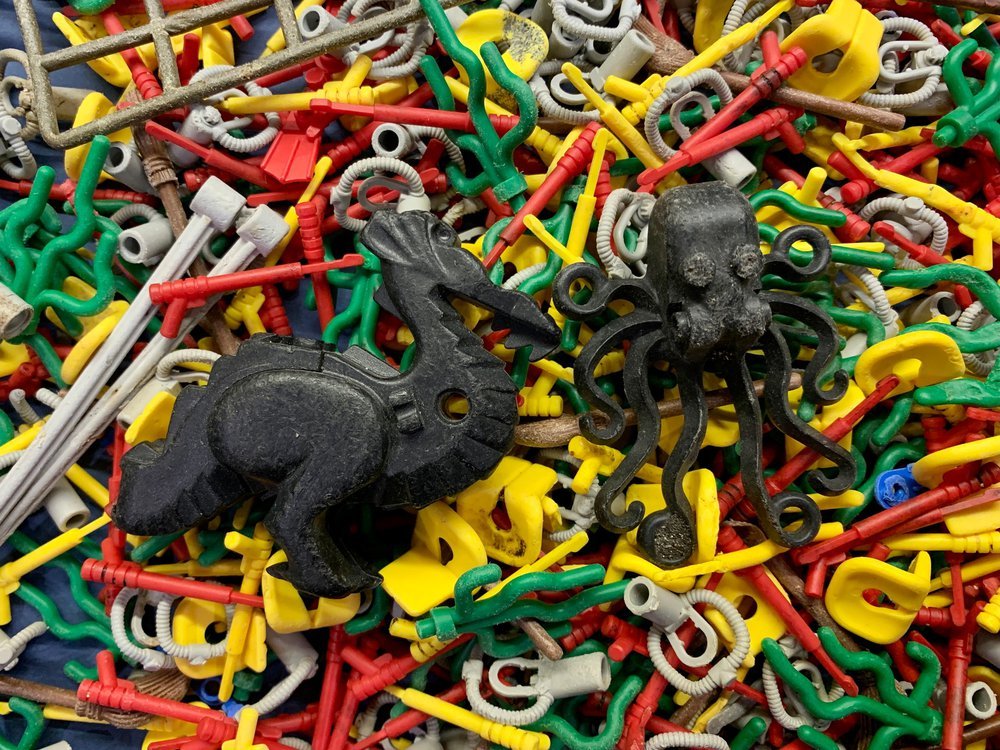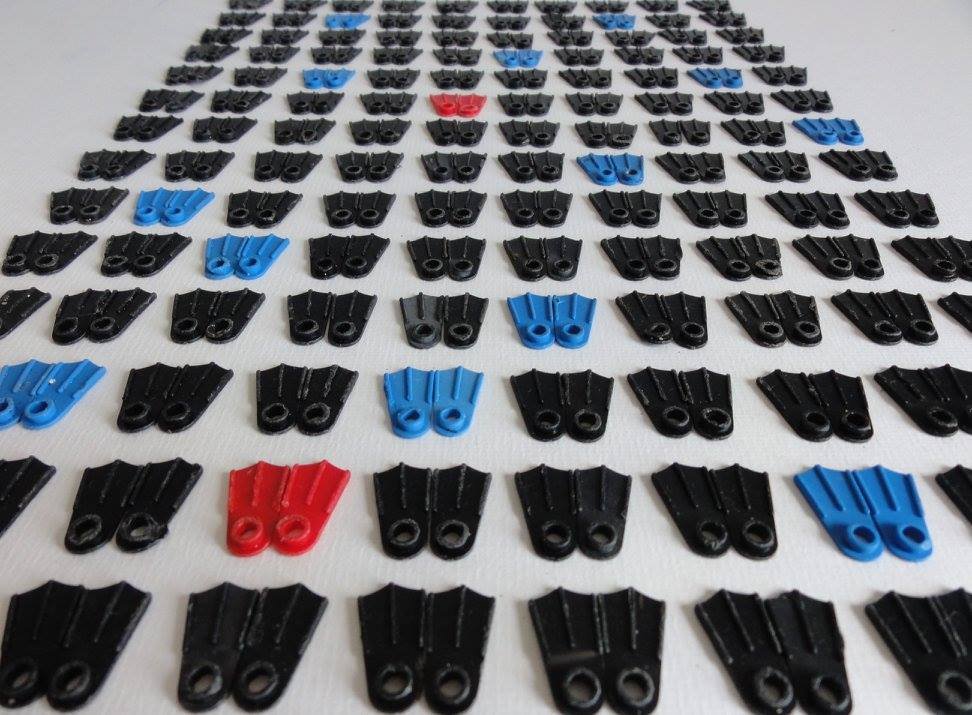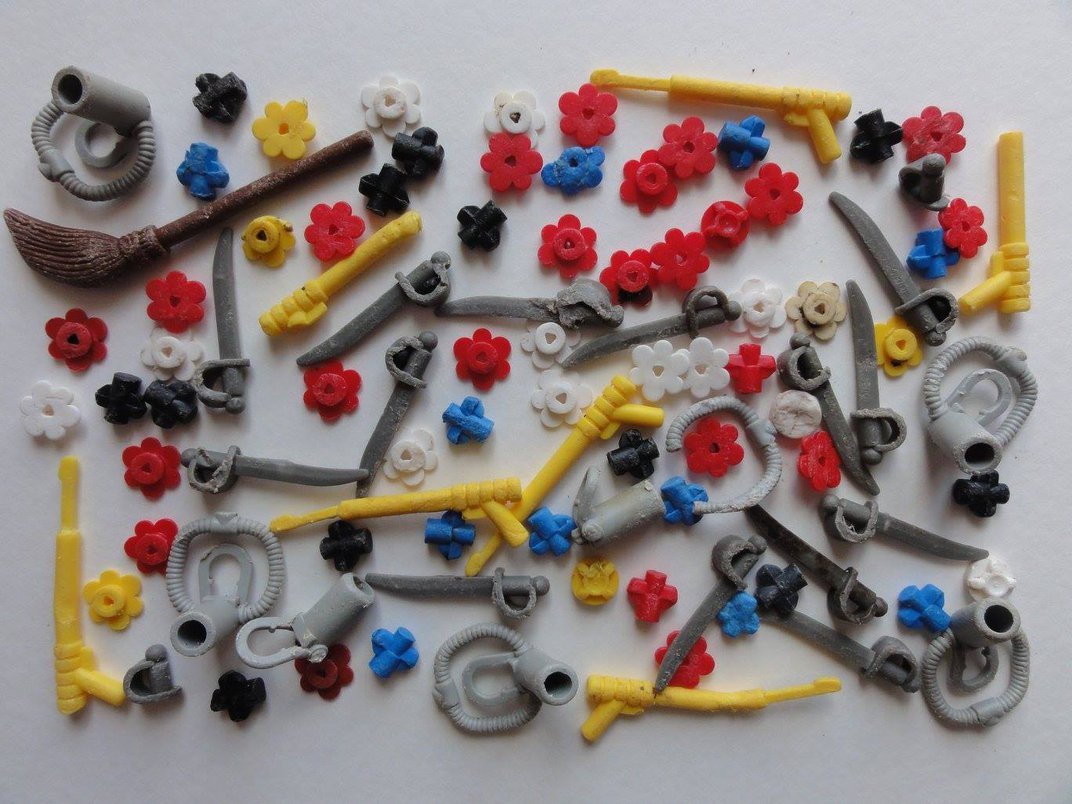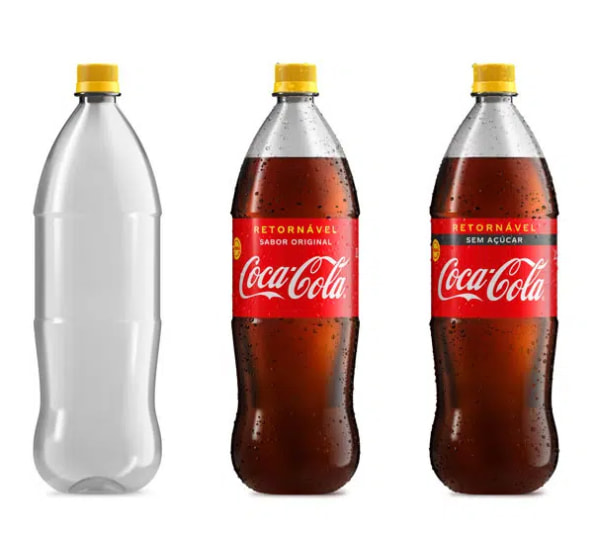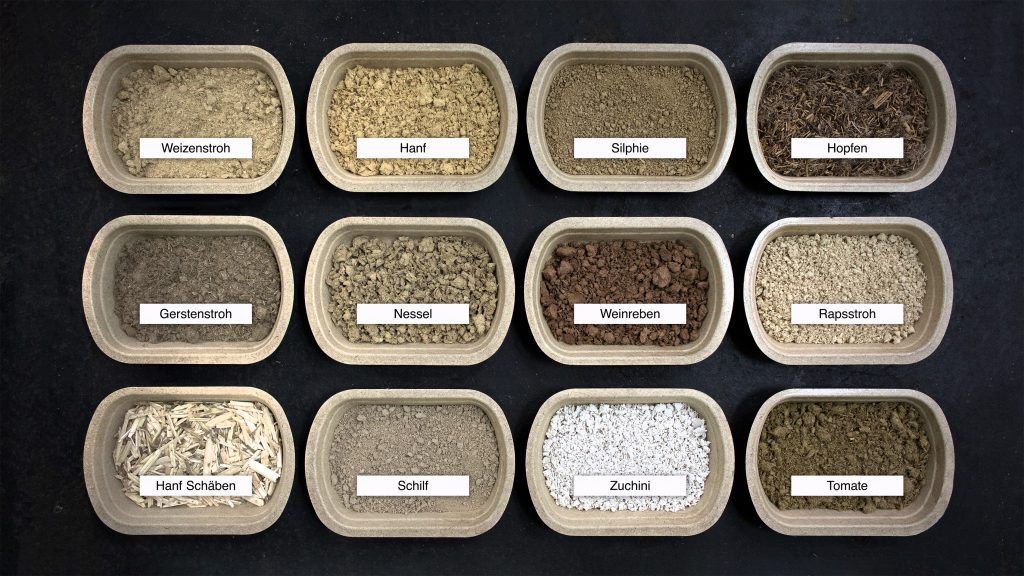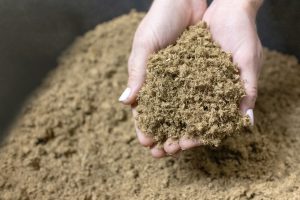POINT COMFORT, TEXASNearly every day for three years, Diane Wilson and a handful of fellow volunteers spent hours poking through the buggy, marshy grasses of the Gulf Coast, combing stretches of pebbly sand, or kayaking beside a huge petrochemical plant, all in search of tiny plastic pellets called nurdles. They found the lentil-sized pieces everywhere, filling gallon bags with them, and submerging bottles to collect water tainted with raw plastic powder.
In March of 2019, Wilson, a retired shrimp boat captain and fisherwoman, loaded a trailer with 2,400 of those samples—46 million individual pellets, she estimates—and drove her pickup truck to federal court to face down Formosa Plastics, the company responsible for the spills. The victory she won there led to what is said to be the largest ever settlement of a private citizen’s Clean Water Act lawsuit. It was a big moment in efforts to confront a type of pollution that, while accounting for a significant chunk of the microplastics choking the world’s seas, gets far less attention than the more visible tide of bottles, bags, and other post-consumer waste.
Now, Wilson’s win is a warning to others making and handling nurdles that they too could face costly consequences for leaking plastics into the environment. Regulation of the pellets remains weak, but the ripples of change the case set off may be the start of a new, more stringent approach to managing them.
Nurdles are the building blocks for all manner of plastic products, from yogurt containers and toothpaste tubes to car parts. Every year, Formosa’s plant turns by-products of oil and gas into millions of tons of those pellets, and plastic powder, a raw form of vinyl. The voluminous evidence Wilson’s group gathered persuaded the judge hearing her case that the complex was discharging a flood of the plastics into Cox Creek and Lavaca Bay, part of an interconnecting network of Gulf of Mexico inlets about halfway between Houston and Corpus Christi.
The judge’s ruling called Formosa a “serial offender” whose “violations are enormous.” Following the verdict, the company, part of Taiwan-based Formosa Plastics Group—the world’s sixth largest chemical maker—agreed to pay $50 million into a trust funding local conservation projects, scientific research, and a sustainable fishing co-operative. Formosa also committed to stopping the spills and cleaning up its mess.
Those costs have gotten the attention of executives elsewhere in the industry, says Karen Hansen, a lawyer in the Austin, Texas, office of the firm Beveridge & Diamond, who represents companies on water quality issues. “No company wants the liability that Formosa Plastics found itself with,” so others are now working to reduce their own nurdle leaks, she says.
Wilson thinks her case is a powerful model: citizen science and activism holding a major polluter to account, and citizen enforcement making the changes stick. Hansen agrees: “The reverberations have been far-reaching.”
Mind-boggling numbers
The problem is not just plastic manufacturers. “Transporters, distributors—the entire supply chain” is losing pellets, says Jace Tunnell, a marine biologist with the University of Texas at Austin’s Marine Science Institute. Nurdles often spill while being loaded on and off trains. They accumulate on tracks and then wash toward rivers, lakes, or coastlines when it rains, says Tunnell, who founded Nurdle Patrol, a citizen science project awarded a $1 million grant from Wilson’s trust.
The numbers are mind-boggling. One study estimated that in the United Kingdom, between five and 53 billion pellets are lost into the environment each year. In 2020 more than 700 million spilled from a cargo ship on the Mississippi River near New Orleans. In Sri Lanka, pellets are still washing up on hundreds of miles of coastline after a container ship carrying 1,700 metric tons sank last year; the UN called it the biggest plastic spill on record.
Overall, a 2016 report estimated, 230,000 metric tons of nurdles enter the world’s oceans each year, accounting for 24 percent of spilled microplastics and nearly 2 percent of total marine plastics.
Even as public awareness about plastic pollution grows, fossil fuel companies and their petrochemical subsidiaries are ramping up to make more plastic than ever in the years to come. The industry—anticipating that action on climate change may reduce demand for oil and gas—sees plastic as a promising source of revenue growth. So without action to address nurdle spills, they could get even more frequent and more damaging.
The industry’s expansion is well underway on the Gulf Coast, long the hub for U.S. plastic production, with new plants opening and old ones growing. ExxonMobil and the Saudi petrochemical conglomerate SABIC just jointly fired up a giant new complex near Corpus Christi. Formosa recently completed a $5 billion expansion of the plant at the center of the nurdle case. Even before it was done, one of the company’s lawyers said the complex was producing a trillion pellets a day.
Last year, in the wake of Wilson’s win, the Texas Commission on Environmental Quality, the state regulator, tightened requirements for companies making and handling nurdles. Neil McQueen, of the Surfrider Foundation, an environmental group, says the new language is too vague, and leaves industry wiggle room to define terms to its advantage. Hansen says companies anticipate tougher enforcement and are acting accordingly.
Elsewhere, other activists are following Wilson’s lead, stepping in where regulators have failed to act. South Carolina environmentalists started collecting nurdles around Charleston Harbor after the Formosa verdict. Last year, they won a $1 million settlement—and an agreement to make changes to prevent future spills—from Frontier Logistics, a plastics distribution company.
‘It was going right into the creek’
Wilson is the fourth generation in her family to have earned a living on the waters tucked behind barrier islands on the Matagorda Bay system. The area’s once-rich habitats—a haven for more than 400 bird species and home to dolphins, alligators, and sea turtles—have been declining for decades, a result of development, industrial pollution, and threats such as algal blooms. That, and a growing awareness of petrochemicals’ toxic footprint, spurred Wilson to become an environmental activist more than 30 years ago.
Her focus on nurdles began in 2012, when a former Formosa employee told her the plant was losing significant quantities. At first, Wilson tried to prod state regulators to do something. The agency sent inspectors, and later fined Formosa $122,000, but Wilson could see that its actions wouldn’t stop the spills.
So in January 2016 she and a few others began what became near-daily nurdle- and powder-collecting outings, under the auspices of San Antonio Bay Estuarine Waterkeeper, a group she leads. “We started wading out on the bay,” Wilson tells me as we sit outside her little purple house, underneath a tree with Spanish moss draped over its thick, twisting branches. “Along the shores, around the boat ramps.” Once they figured out where to look, the pellets were easy to see, “and they’re everywhere.”
She bought a cheap kayak and started paddling on Cox Creek, which meanders right past Formosa’s 2,500-acre complex. She found one of the discharge points, a ditch “coming right from the plant. And it was going right to the fence, and it was going right into the creek,” she says. In one spot nearby, pellets carpeted the marshy shore, “like that deep,” she told me, holding her hands about five inches apart.
The volume and meticulous documentation of the samples her group gathered, plus hundreds of photos and videos, enabled Wilson’s lawyers to refute one of Formosa’s main arguments—that any plastics it discharged were only “trace” amounts, allowed by its permit. While questioning one of the company’s expert witnesses, “he was talking about ‘trace,’ and I had a video of Diane in a kayak on the creek,” says Amy Johnson, one of Wilson’s lawyers. “And all around her is a bed of plastics floating on the water, probably five or 10 feet out,” she recalls. “We all know that’s not a trace amount.”
Holding Formosa to account
In the end, U.S. District Judge Kenneth Hoyt found there were 736 days of illegal releases at one of Formosa’s discharge points, and 1,149 at a group of eight others. Lawyers hashed out a consent decree that gives Wilson an unusual degree of involvement in holding Formosa to its commitments. Her team scrutinizes the company’s plans for removing old pellets and stopping fresh discharges, and she can challenge any of it in court. Formosa pays for her lawyers and an engineering expert.
Meanwhile, an independent monitor tracks new spills. The company is fined $25,000 a day, per body of water, for each violation. Since the settlement, it’s racked up nearly $4 million in new fines, payable to the trust.
Formosa said in an email that its plant had not discharged any nurdles since November, and was working toward eliminating loss of smaller plastics, but had no estimate of current powder discharges. “Reaching zero visible plastics loss is a priority for the company,” its statement said, adding that Formosa participates in Operation Clean Sweep, a voluntary industry program to reduce plastic discharges.
Johnson says the fixes Formosa has made so far are superficial measures such as filters, not the more fundamental changes needed inside the plant. In the last quarter of 2021, the monitor logged violations on 78 out of 91 days.
While the scale of Wilson’s evidence collection is unusual, the “citizen suit” has long been key to American environmental enforcement. Environmentalists now worry the Supreme Court may tighten eligibility to sue in such cases, making it harder for individuals to challenge big polluters.
‘You’ll never get through counting them’
Meanwhile, the trust’s money is being disbursed. The biggest initiative, at $20 million, is the creation of a sustainable fishing cooperative. A Georgia-based federation of Black farming cooperatives oversees the project, aiming to revitalize the bays’ ecosystems so small fishermen and shrimpers have a future. Other grants fund beach restoration, the creation of a park, and kids’ environmental education at YMCA camps.
Funding scientific research is another focus of the trust. Tunnell’s Nurdle Patrol has more than 5,000 volunteers, who have done 11,000 pellet surveys. The metric they use is how many nurdles one person can gather by hand in 10 minutes; participants scoop as many as they can, count them afterwards, and report the results.
After Tunnell vets the data, it’s plotted on a map. “Now you overlay it with where the manufacturers are—boom, it matches up,” he says. Around New Orleans and through the Mississippi River Delta cluster dots of red (meaning 101 to 1,000 nurdles collected) and purple (more than 1,000 nurdles). The petrochemical hub around Houston is crowded with purple, and a steady line of red and orange (31 to 100 nurdles) goes right down to Mexico.
Data is trickling in from elsewhere in the country, and it offers a glimpse of nurdles’ reach—reds on the Great Lakes; near Philadelphia and Trenton, New Jersey; around Charleston, South Carolina; and in the Pacific Northwest. Only one state, California, bars nurdle discharges, Tunnell says. Nurdle Patrol encourages participants to use their data to push political leaders for tighter regulations.
Researchers are also studying the harm nurdles wreak. Birds and sea creatures can choke or suffer internal damage when they ingest pellets, or starve with stomachs full of plastic. Another worry is the chemicals that attach themselves to floating pellets. Dangerous toxins, including mercury, the long-outlawed pesticide DDT, and a group of hazardous industrial chemicals called PCBs have all been found on nurdles.
Near the Formosa plant, Wilson’s volunteers are still out looking for plastic. On a baking day in August 2021, Ronnie Hamrick, a retired Formosa worker, takes me to a little stretch of beach near a bait stand, where a layer of white scum coats the water. “This whole bay is totally like this,” he says. “You got kids swimming in it.”
Later, across a two-lane highway from the plant, I follow him down a steep embankment to the edge of Cox Creek. Mopping sweat from his face, he pulls aside thick clumps of vegetation with a rake. In the little puddle it exposes, maybe 10 inches square, hundreds of white pellets float to the surface.
Everywhere Hamrick probes, there are more nurdles—a hint of how hard it will be to clean up this mess without irrevocably damaging the ecosystem. He pulls out a plant and holds it up to show me the pellets laced densely through the root system, like tiny eggs. “I’ll get you more over here, I see a bunch of them,” he tells me. When I ask Hamrick how many nurdles he guesses are in a particular spot, his reply is a reminder of the sheer volume of Formosa’s spills. So many, he answers sadly, that “you’ll never get through counting them.”
Reporting for this story was supported by the McGraw Fellowship for Business Journalism at the City University of New York’s Craig Newmark Graduate School of Journalism. Beth Gardiner is the author of Choked: Life and Breath in the Age of Air Pollution.






